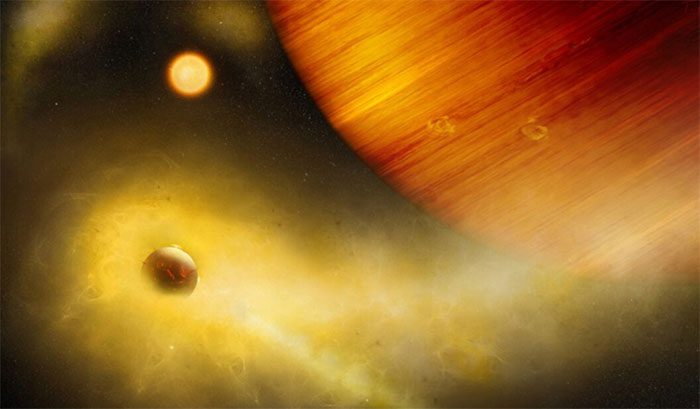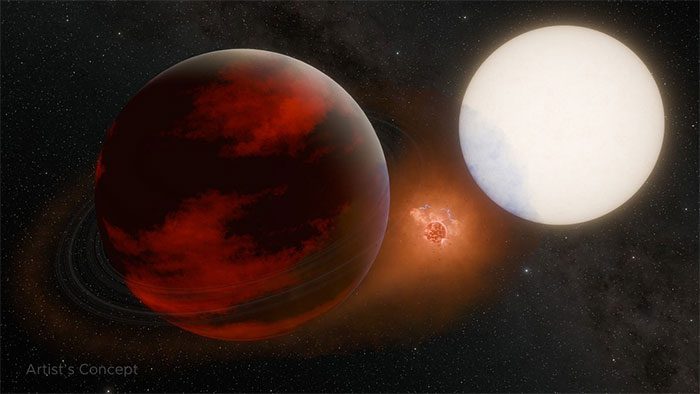Astronomers Discover Evidence of an Unexplored Moon Covered in Active Volcanoes.

Lava moon orbiting exoplanet WASP 49-b. (Graphic: UPI).
A lava-covered moon may be lurking in the WASP-49 solar system, approximately 554 light-years away from Earth, scientists from the Institute of Physics at the University of Bern, Switzerland announced on August 29. The research team described the new discovery as resembling Io—one of the most geologically active bodies in the solar system with over 400 volcanoes.
While observing with the Very Large Telescope at the European Southern Observatory (ESO) in Chile, the JPL/NASA research team detected a sodium cloud surrounding WASP-49 b, located above the atmosphere of this planet.
Although they could not directly observe the moon, astronomers noted an unusual spike in sodium gas at a high altitude around the exoplanet WASP 49-b. Atomic sodium typically originates from volcanic activity, suggesting the presence of a “lava body” orbiting WASP 49-b.
“The sodium gas clouds are located far away from WASP 49-b, indicating they cannot be lifted from the planet’s surface by winds,” astronomer Apurva Oza ruled out the possibility that sodium gas is generated by volcanic activity on the exoplanet WASP 49-b.
Both WASP-49 b and its star mainly consist of hydrogen and helium, with only a small amount of sodium. Meanwhile, the cloud appears to originate from a source producing about 100,000 kg of sodium every second.
On two separate occasions, researchers also observed a sudden increase in the size of the cloud when it was not adjacent to the planet, indicating it was being refueled by another source.

Planet WASP-49 b (left) and a lava moon located between it and its parent star – (Graphic: NASA/JPL-Caltech).
The cloud also seems to move faster than the planet, suggesting that its source appears to move independently and at a higher speed than WASP-49 b.
Another piece of evidence indicating that this cloud is independent of WASP-49 b is that it does not match the planet’s orbital period of 2.8 days.
Using computer models, researchers demonstrated that the presence of a moon outside the solar system with an 8-hour orbit around this planet could explain the cloud’s anomalies.
This moon is considered an exoplanetary version of Io.
Io is one of Jupiter’s four largest moons and is often referred to as the “volcanic moon” due to its hundreds of active volcanoes.
Thanks to Io, we know that such a “hellish” moon can exist and may generate bizarre clouds like those surrounding WASP-49 b.
NASA scientists stated that they are still searching for more definitive signs of this volcanic moon’s existence, as well as ways to observe it more closely.
If confirmed, it would be an extraordinary discovery, as observing a small object like a moon in such a distant location is extremely rare.


















































